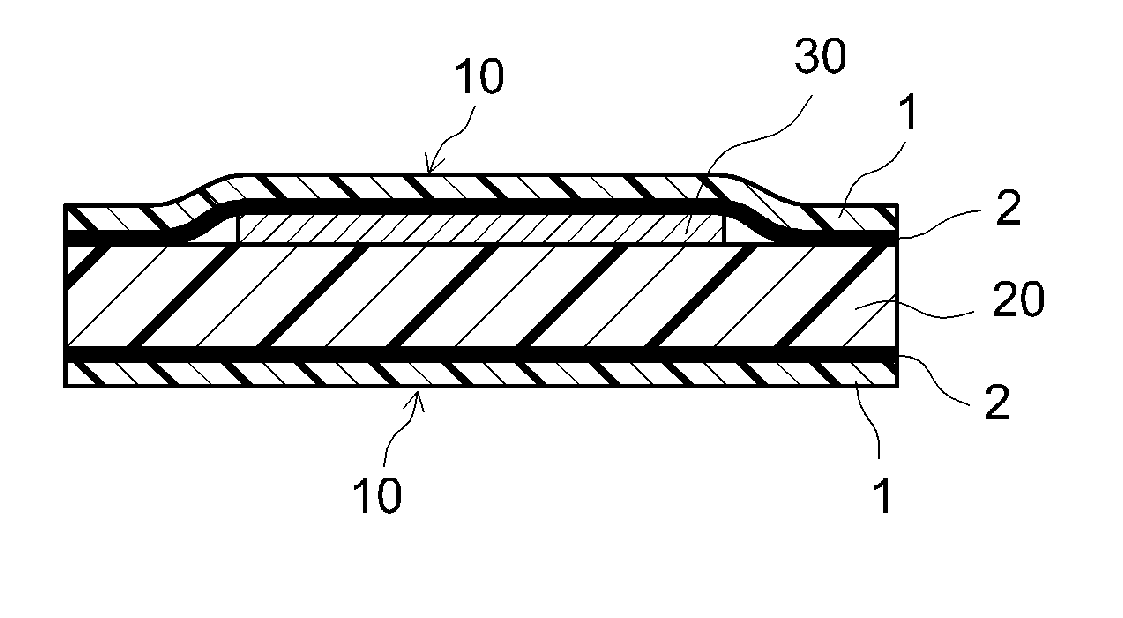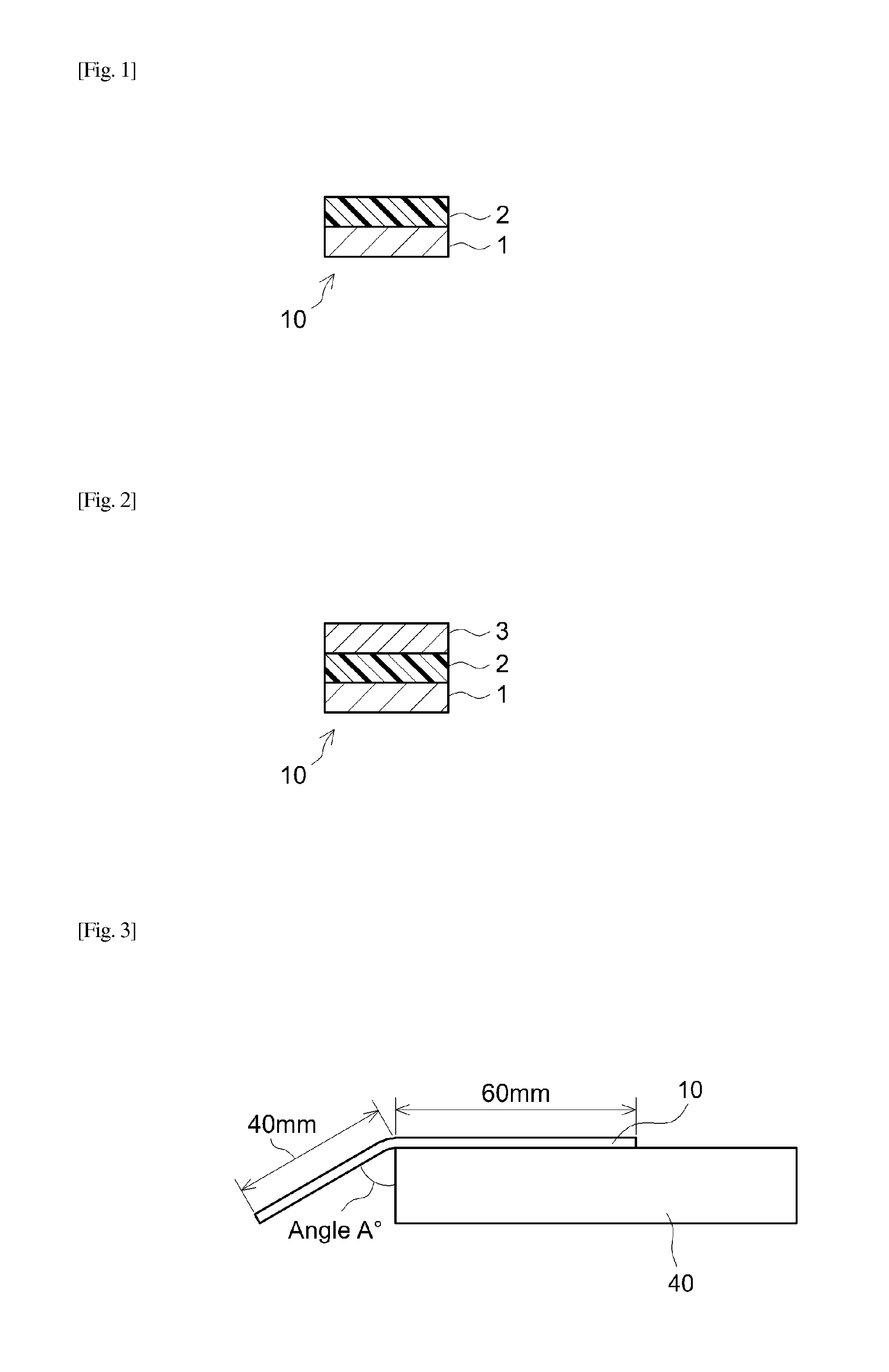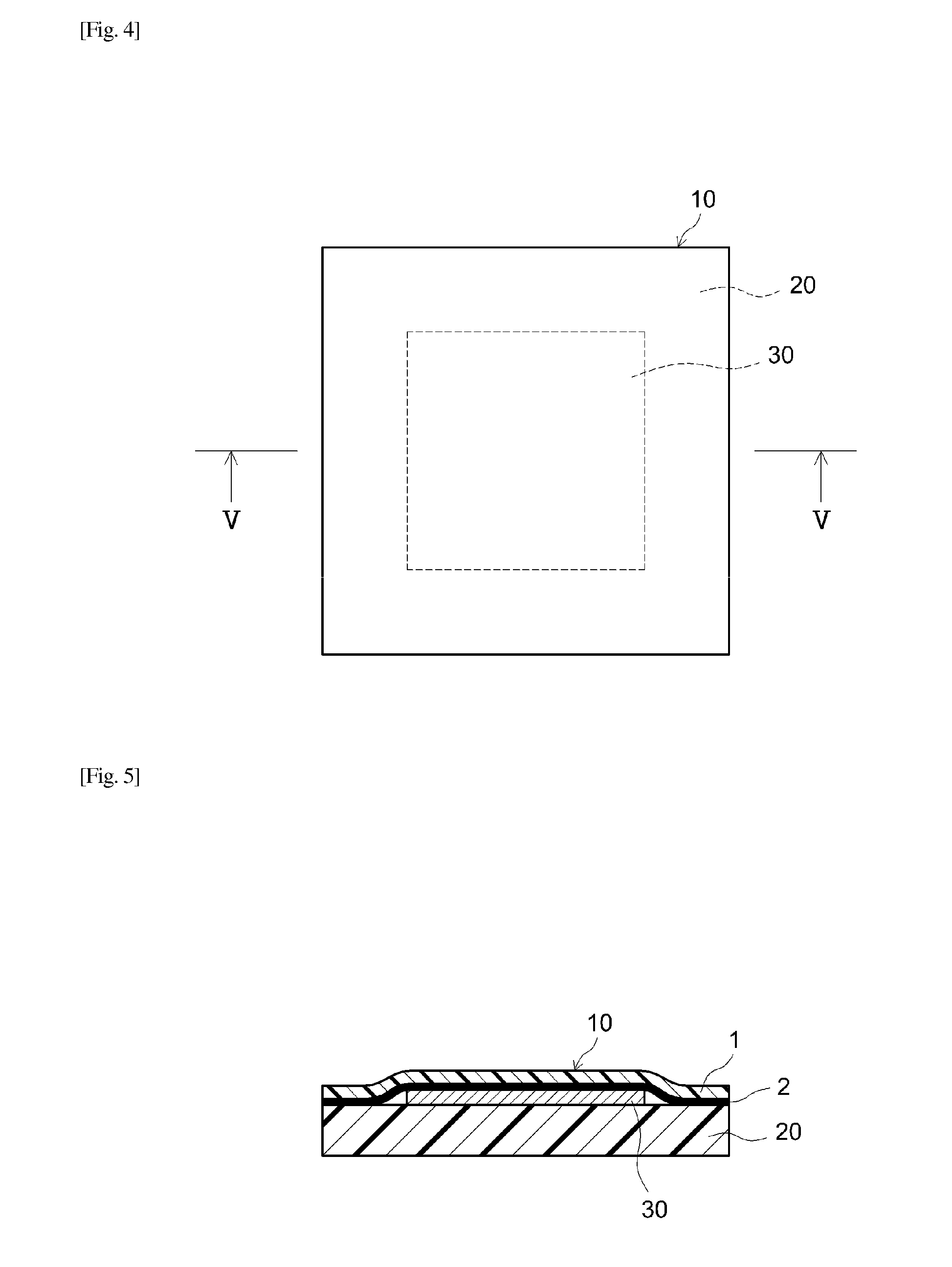Protective sheet for glass etching
a technology for protecting sheets and glass etching, applied in the direction of film/foil adhesives, basic electric elements, electrical appliances, etc., can solve the problems of reducing glass strength and not being able to surely stop etching solutions, and achieves excellent adhesion, easy application, and suitable hardness.
- Summary
- Abstract
- Description
- Claims
- Application Information
AI Technical Summary
Benefits of technology
Problems solved by technology
Method used
Image
Examples
experiment 1
Example 1
[0233]Using PE film as a substrate, a protective sheet was fabricated. A low-density polyethylene (trade name “PETROTHENE 180” available from Tosoh Corporation) was molded into 100 μm film at a die temperature of 160° C., using an inflation molding machine, and one face thereof was subjected to a corona discharge treatment to prepare a PE film. To the corona-treated face of the film, an acrylic PSA composition a was applied and allowed to dry at 80° C. for one minute to form a 3 μm thick PSA layer. To this PSA layer, a non-corona-treated face of the same film was adhered and the resultant was aged at 50° C. for two days to fabricate a protective sheet.
[0234]As the acrylic PSA composition a, was used a composition produced by the following method: To a reaction vessel equipped with a condenser, a nitrogen inlet, a thermometer and a stirrer, 100 parts of 2-ethylhexyl acrylate, 80 parts of vinyl acetate, 5 parts of acrylic acid and 0.3 part of benzoyl peroxide (BPO, “NYPER (re...
example 2
[0235]A protective sheet was fabricated in the same manner as Example 1 except that as the crosslinking agent, 4 parts of an epoxy-based crosslinking agent (“TETRAD (registered trademark)-C” available from Mitsubishi Gas Chemical Inc.) was added (in other words, the amount of the epoxy-based crosslinking agent used was doubled), and the thickness of the PSA layer was 10 μm.
example 3
[0236]The same substrate as Example 1 was molded as 150 μm thick film (in other words, a substrate was molded in the same manner as Example 1 except that the thickness of the substrate was 150 μm), and an acrylic composition b was applied to form a 10 μm thick PSA layer, whereby a protective sheet was fabricated. As the acrylic PSA composition b, was used a composition produced by the following method: To a reaction vessel equipped with a condenser, a nitrogen inlet, a thermometer and a stirrer, 100 parts of 2-ethylhexyl acrylate, 80 parts of vinyl acetate, 5 parts of acrylic acid and 0.3 part of benzoyl peroxide (BPO, “NYPER (registered trademark) BW” available from NOF Corporation) were added to a desirable non-volatile concentration in toluene, and let copolymerize to obtain an acrylic copolymer. To 100 parts of the acrylic polymer, were further added 20 parts of a xylene resin (“NIKANOL (registered trademark) H-80” available from Mitsubishi Gas Chemical Inc.), 2 parts of a butyl...
PUM
| Property | Measurement | Unit |
|---|---|---|
| thickness | aaaaa | aaaaa |
| surface roughness | aaaaa | aaaaa |
| adhesive strength | aaaaa | aaaaa |
Abstract
Description
Claims
Application Information
 Login to View More
Login to View More - R&D
- Intellectual Property
- Life Sciences
- Materials
- Tech Scout
- Unparalleled Data Quality
- Higher Quality Content
- 60% Fewer Hallucinations
Browse by: Latest US Patents, China's latest patents, Technical Efficacy Thesaurus, Application Domain, Technology Topic, Popular Technical Reports.
© 2025 PatSnap. All rights reserved.Legal|Privacy policy|Modern Slavery Act Transparency Statement|Sitemap|About US| Contact US: help@patsnap.com



